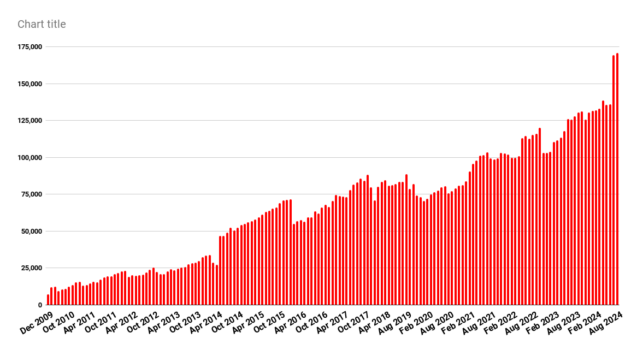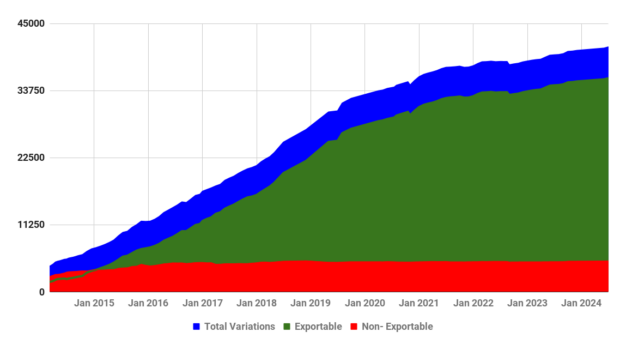Council of Europe Highlights Metaverse’s Impact on Privacy and Democracy
In partnership with the IEEE Standards Association, the Council of Europe has issued an extensive report assessing the potential effects of the Metaverse on human rights, democracy, and the rule of law. The report does a deep dive into those virtual opportunities and risks posed by the very immersive technologies that comprise this new frontier, stressing the importance of taking regulatory action to protect and preserve the basic virtual liberties of our global citizenry.
The Metaverse—an immersive, persistent, and interoperable digital environment—contains opportunities for significant advancements across many sectors, including entertainment, education, healthcare, and commerce. However, some experts fear that the Metaverse could bring with it big privacy risks. Indeed, the report analyzes the potential upsides and downsides of the upcoming tech revolution and warns that user data could be at risk in immersive spaces.
One of the main worries centres on the enormous amounts of data that could be collected. The Metaverse depends on technologies like augmented and virtual reality, which gather huge caches of personal information through wearable devices and other sensors.
These technologies have the potential to grab not only the usual sorts of data, like demographic information, but also biometric data—such as the movements of our eyes, the expressions on our faces, and the gestures of our bodies. AR and VR can use this data to make the immersion feel seamless; but in the “what could go wrong” department, there’s so much more potential here for privacy invasion and even identity theft than in most other digital experiences.
The report recommends sturdy privacy frameworks to safeguard users, advocating for both privacy-preserving technologies and transparent data practices. It urges clear user consent and greater user control among companies operating in the Metaverse.
Web3: A Decentralized Future?
The next installment of the internet—Web3—will have its own set of consequences for the Metaverse and for the people who use it, according to the report. Unlike the current internet, which is dominated by a few large platforms, Web3 will be built on decentralized blockchain technologies, which could lead to a greater ability for users to control their data and digital assets.
In contrast to the Web 2.0 platforms that centralized tech companies control, Web 3.0 envisions a more democratic digital ecosystem where users have both ownership and governance over the platforms they inhabit. However, with this decentralization comes a big question mark over governance. Who ensures that our platforms operate effectively, efficiently, and fairly?
Overseeing decentralized platforms is no simple task. And while these platforms seem naturally suited to operate in an unregulated space, it’s important to understand that they could just as easily become lawless as any other unregulated space. The Council of Europe advises that existing legal frameworks be adapted to the new decentralized conditions.

Risks to Democracy and Free Expression
The Council of Europe Metaverse report looks at how the Metaverse can fundamentally alter how people communicate and interact socially, but it’s also a potential threat to free speech and democracy. The distraction-free environments of the Metaverse can be used to good effect, allowing users to have virtual town halls and even virtual elections. However, those same environments can also be used as a blank canvas to control what is seen and heard.
The important problem of content moderation often finds platforms turning to algorithms for assistance. However, the report points out that these algorithms “may lack the nuance to distinguish between legitimate expression and harmful content.” Moreover, users in the Metaverse can become trapped in “filter bubbles,” where they’re shown only content that aligns with their preexisting beliefs and opinions. This isn’t just a phenomenon of the virtual world but a hallmark of our current information ecosystem.
The Council of Europe emphasizes the importance of content moderation in protecting not just the right to expression but also the principles of democracy and good governance. Any content moderation policies should not only achieve these goals but also be transparent and allow for user appeal. Our increasing immersion in digital environments makes this a vital as well as a pressing issue, especially in terms of how persuasive and undetectable false narratives can be.
Safeguarding the Rights of Children
The Metaverse is a particularly vulnerable space for children. The recent report expresses strong concerns about the inability of current systems to provide meaningful age checks and the exposure of children to spaces that could be dangerous.
The European Council demands wants more stringent rules on age-appropriate design and robust age verification systems. It wants the platforms used by our children to converge toward a meaningful level of safety. It also wants us to converge toward an acceptable level of understanding of the augmented and mixed realities our children will experience.

Governance and the Rule of Law
Ensuring proper governance of the Metaverse is no easy task. It is a virtual world operating across real-world borders and raises fundamental questions of jurisdiction, enforcement, and accountability. These are age-old problems of virtuality that our recent online tools have not resolved. Indeed, traditional legal frameworks are likely ill-suited to handle decentralized and borderless virtual environments—especially when it comes to addressing the real crimes that occur in these virtual worlds.
The report highlights the necessity of global teamwork in fashioning the new legal structures that will have to govern the Metaverse. The virtual world is just too vast for any one country to regulate on its own. As the Metaverse continues to expand, it will require not just the investment of governments and tech companies but the collaborative input of people all over the world. In recent months, the Council of Europe has been very active in this effort, and its most recent report is a fine overview of the current state of play and its recommendations for moving forward.
Final Thoughts
The Council of Europe insists on the urgent need for timely governance and regulation of the Metaverse and Web3 technologies. As these still-nascent technologies offer great prospects for innovation and social engagement, they also hold the potential to create newfound and serious threats to privacy and identity, not to mention a whole new frontier for content moderation and governance that will make current debates seem quaint by comparison.
Editor’s note: Written with the assistance of AI – Edited and fact-checked by Jason Newey.










 And thinking that, how this space can be out October if the Whiteboard support is coming out November..
And thinking that, how this space can be out October if the Whiteboard support is coming out November.. 



























